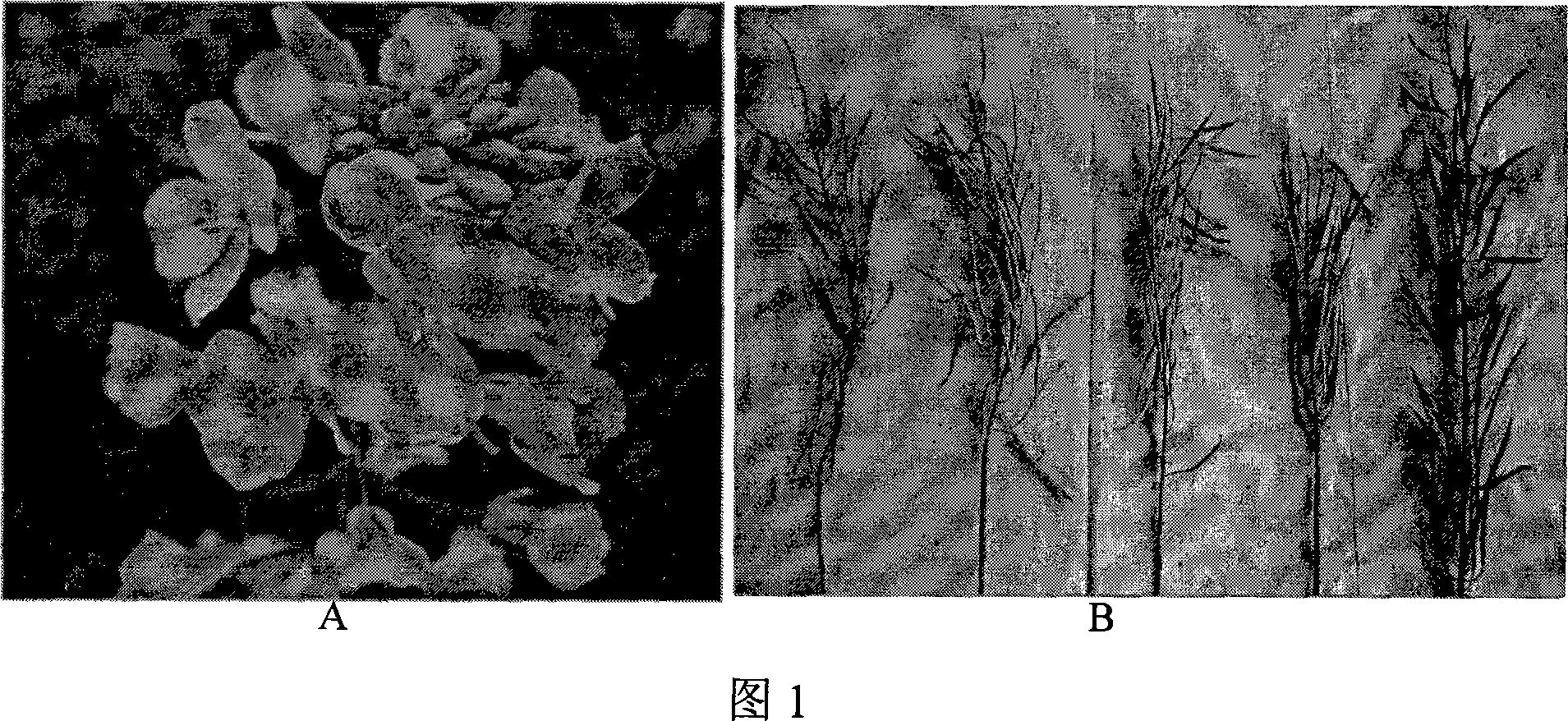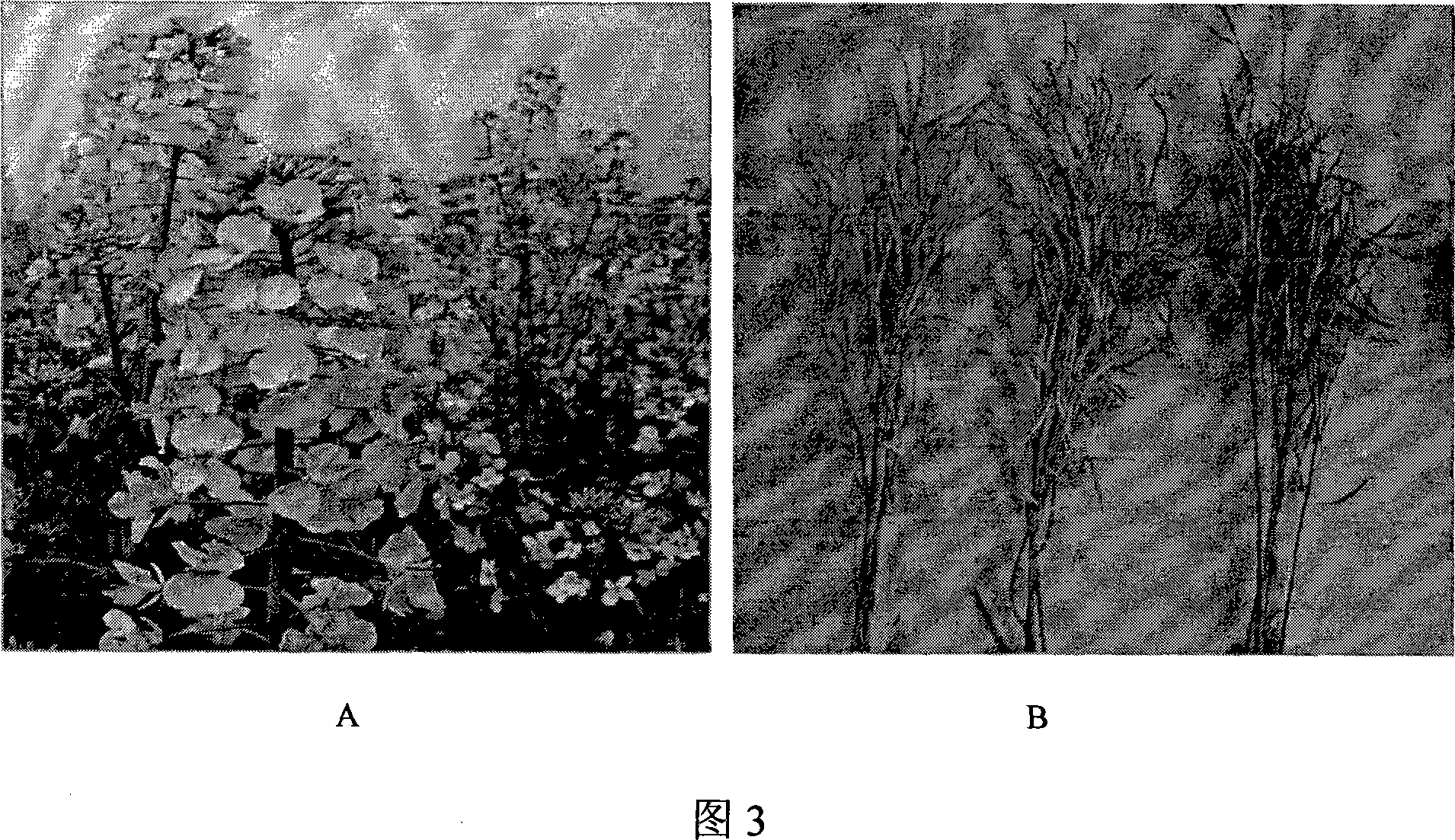Method for breeding hybrid of rape or cruciferae vegetables by using wild leaf mustard sterile cytoplasm
A cruciferous vegetable, cytoplasmic technology, applied in the field of plant breeding and improved variety breeding, can solve the problems of slow breeding and utilization process of sterile lines, difficult to find restorer lines, etc., and achieves high hybrid breeding efficiency, high identification efficiency, and three Easy effect of line selection
- Summary
- Abstract
- Description
- Claims
- Application Information
AI Technical Summary
Problems solved by technology
Method used
Image
Examples
Embodiment 1
[0037] Implementation Example 1: Intergeneric hybridization introduces wild mustard cytoplasmic male sterility to restore traits and prepares hybrids
[0038] 1. Adopt plant material to carry out protoplast fusion or sexual hybridization (see implementation example 2) to obtain the somatic cell hybrid containing wild mustard cytoplasm, the plant material used is Brassica napus double low variety Zhongshuang No. 4 and Xinjiang wild mustard resource Yeyou No. 18 , including the following steps:
[0039] A, the separation of mesophyll protoplasts: the seeds of Brassica napus varieties Zhongshuang No. 4 and No. 18 Yezhiyeyou are surface-sterilized (put 70% ethanol for 1 minute, 1.5% sodium hypochlorite for 10 minutes, sterile water washed 3 times), inoculated on MS medium for culture, and placed at 25°C for 16 hours to grow under the condition of 60-80 μmol m-2s-1 light. Fully expanded leaves were used for the isolation of protoplasts. During enzymatic hydrolysis, 3.5ml of SCM s...
Embodiment 2
[0052] Implementation Example 2: Sexual hybridization introduces wild mustard cytoplasmic male sterility restoration gene to produce hybrids
[0053] 1. Ovary culture to obtain intergeneric hybrids containing wild mustard cytoplasm: plant wild mustard Yeyou 18 and Brassica napus Zhongshuang 4 in the field, use Yeyou 18 as the female parent and Zhongshuang 4 as the male parent in the flowering stage, and manually remove Male and pollinated, 7-10 days after pollination, pick back the siliques that have begun to develop, after surface disinfection, place them on MS medium containing 0.8% hydrolyzed casein for culture, and after 35-40 days, take out the immature embryos in the siliques , germinate on MS medium, and grow true leaves after germination.
[0054] 2. Chromosomal doubling of intergenus hybrids: After the true leaves grow, the seedlings are excised, placed in MS medium containing 0.01% colchicine for 10 days to carry out chromosome doubling, and then transferred to cultu...
PUM
 Login to View More
Login to View More Abstract
Description
Claims
Application Information
 Login to View More
Login to View More - R&D
- Intellectual Property
- Life Sciences
- Materials
- Tech Scout
- Unparalleled Data Quality
- Higher Quality Content
- 60% Fewer Hallucinations
Browse by: Latest US Patents, China's latest patents, Technical Efficacy Thesaurus, Application Domain, Technology Topic, Popular Technical Reports.
© 2025 PatSnap. All rights reserved.Legal|Privacy policy|Modern Slavery Act Transparency Statement|Sitemap|About US| Contact US: help@patsnap.com



